Do you have a business manager account that’s in disarray?
No one wants to admit that they are clueless over who has access to what, especially when it comes to something as vital as a Business Manager account, but luckily, we have something that can help…
Throughout this process, we will guide you throughout the process of how you can effectively manage user access roles and assigning Facebook Assets.
Sound like this will be of use to you? Then get reading!
Top Tips
- Without proper management, it may be difficult to keep track of who has access to what through your business manager.
- This is a process that you will need to do every time that you begin to work with a new third-party that has a Facebook Asset.
- To follow this blog successfully, you will need to have access to a Facebook Business Manager account.
- Please make sure that you have switched to the previous UI version of the Ads Manager.
Benefits
By the end of this blog post, you will have total control over who has access to what Facebook Asset – this can help you to successfully manage who has control over what.
We have outlined 3 different options available – that way, you will be able to clearly see whether route 1/2/3 is appropriate for you.
Transferring Assets To A Business Manager
Note – here were are outlining the process that you would need to go through to transfer assets over from a personal account to a business manager.
In the event that you already have this covered and all of the assets are being managed under the correct account, then feel free to skip this step.
IMPORTANT – You should be aware that the claiming of assets should only be conducted if you are the owner of that particular asset – if you are working on behalf of someone else as an agency (Etc) then do not go through and claim this asset.
- As an alternative to this, you will need to ensure that you are given the relevant role – we will outline how you can do this in this blog post.
Providing Admin Access Level
Throughout this stage of the blog, we’ll be giving you a run-down of how you can get admin level permission.
So in this case, the usual situation you’ll be faced with is that when you first created the Facebook page or ad account for your business, it was done using a personal profile, however with the stage that you are at now, a Business Manager would be better software for you to be using.
By doing this, it will be simpler for you to control levels of access to your assets for both internal and external bodies.
There are some details which you are going to need to input:
- Assets which can be claimed
- The Assets’ URL/ID
- Title of the current owner
Business Manager – Additional Pages
You will need to make sure that you have logged into the Business Manager account – to begin, you will need to make sure to select “Business Settings” and follow these instructions:
- First of all, you will need to need to go to the sidebar and select these in the following order:
- “Pages”
- “+Add”
- “Add a Page”
- Here you input the URL of the web page or the name of the page, once you have done this, you will need to hit this button: “Add Page”
And you’ve done it! You have successfully added the page to the Business Manager account – in the event that you were already a page Admin, then this would mean that the request would be instantly approved, so this means that you will already have admin rights for that particular page through the Business Manager.
Business Manager – Linking Ad Accounts
To start, you will need to be logged into the relevant Business Manager account. Now you will need to go to the header and select “Business Settings”. Here are a few stages you will need to link up to connect ad accounts:
- Go over to the sidebar and select these in this order:
- “Ad Accounts”
- “+Add”
- “Add an Ad Account”
- You will notice that you are prompted to input data into this field “Ad account ID” – in order to find this information, you are going to need to have your ads manager open and make sure that you select the dropdown menu at the top-left of your screen.
- Now make sure that you copy and paste the account ID and input it into the relevant field – once you have done this, just hit the “Add Ad Account” button and you’re done!
You’ve now successfully linked your Ad Account up – again if you were an admin of this ad account prior, you will be classed as an admin again through the manager account.
Assigning User Roles To Assets
To begin with, you will need to make sure that you have selected the relevant levels of permission access which you’re willing to provide someone with relating to assets. Basically, here we are going to explain to you how you can connect the user roles for different assets.
First of all, we’re looking at Business Manager accounts:
- Admin Level Access – This is a role that you should assign to people who you have 100% trust in, and do require access to certain privileges.
- Worker – This is a role which you can use to assign assets to specific bodies – i.e. pages you need linking up.
Now we’re looking at Ad Accounts:
- Admin Level Access – This is a role that you should assign to people who you have 100% trust in, and do require access to certain privileges.
- Advertiser – If you have a worker or partner which will be actively working on your account, then you will need to assign them the role of “Advertiser”
- You should keep in mind that people assigned with this role will not be able to edit the budget that has been assigned to ads.
- Analyst – this is the role that you will need to select if there are parties who do not need to build out or make edits to ads.
- This would be a suitable option to select in the event that you do not need to manage the ad account, just go through and audit it.
Thirdly, we have Pages:
- Admin Level Access – This is a role that you should assign to people who you have 100% trust in, and do require access to certain privileges.
- Editor – Assign this to a person or agency who manages the social media pages.
- Moderator – Assign this to someone who is responsible for managing a customer service line for a client.
- Advertiser – Assign this to who those who are responsible for advertising via the social media page.
- Analyst – This level of access will mean that the assignee is able to go through and look at Facebook Insights and won’t be able to access anything else.
Here we have outlined how you can set up a Pixel:
- Editor – Those who have been assigned this role are able to set up and form audiences, make alterations to the pixel and also use the pixel to set up conversion ads.
- Analyst – People who are assigned this role only have the ability to see pixel related information – so they won’t be able to set up any ads or audiences.
Lastly, you will need to look at Finance Management:
- Editor (Finance) – By being assigned this role, people will have the ability to make alterations to your inputted financial data.
- Analyst (Finance) – Assigning this role means that an analyst is only able to view financial information about your business but aren’t able to make alterations.
Throughout the following section, you will need to pinpoint which section applies to your organisation and there are 3 options you can choose from:
- Providing Account Access Via Business Manager A To Business Manager B
- Providing Account Access Via Business Manager To A Personal Account
- Asset Assignment To A Linked Personal Account Via Business Manager
Find whichever option is relevant to you – they have been labelled Options 1/2/3.
Option #1 – Providing Account Access Via Business Manager A To Business Manager B
| Level Of Provided Access | Multiple |
| When Would It Be Used? | Would apply to the scenario where you are beginning to work with the client – this means that they can access several assets. |
| Who’s Responsible? | The person who is intending to provide Business Manager access |
| What Data Is Required? | To do this successfully, you are going to need to input the ID of the relevant Business Manager account. |
To get started, you will need to make sure that you are logged into the relevant account on Business Manager. Hover over the header and select “Business Settings” and then go round to the sidebar, and select “Partners” and then “+ Add”.
Continue by inputting the ID of the partner’s ID account (if you don’t have this, make sure that you have requested this) and then select “Next”.
Now you will need to go through the process of making sure that all of the assets which you are intending to share and all the roles you were assigning are correct, and once you’re happy with the results, make sure to select “Assign Assets”.
And… you’re done! You have gone through and provided assets access. This will mean that the partner you have given permissions to has the same levels of abilities (in terms of assigning (etc)) that you do and so will be able to add in their own team if required.
Option #2 – Providing Account Access Via Business Manager To Personal Account
This procedure is what you will follow when setting up a Business Manager to a Personal Account for the first time.
| Level Of Provided Access | Multiple |
| When Would It Be Used? | This is the procedure that you would follow in the event that you are an organisation which needs to provide access to social media pages or ad account. |
| Who’s Responsible? | The person who is intending to provide Business Manager access |
| What Data Is Required? | To complete this you are going to need to have the following details:
|
First of all, make sure that you are logged into the relevant Business Manager account, and then go over to the header, making sure to select “Business Settings” and now you will need to follow these few steps to complete the process successfully:
- Go to the sidebar and make sure to select “People” and then “+ Add”
- Once you have done that you will need to input the email address of the party who you are intending to provide access to – ensure that you have also provided them with the correct role assignment and then make sure to select “Next”.
- You will now need to go through the process of clicking the assets which you would like to be shared with the relevant partner, as well as their specific access level role, and once you are happy with your choices, you will need to select “Assign Assets”.
And you’ve done it, your employee should now receive an email which has confirmed that they are able to connect their own account to your Business Manager.
Here’s an extra tip for you – we’ve outlined the steps that your employee will need to go through to ensure that everything is linked up correctly on their end.
- To start off with, they will need to find the email which they have been sent and make sure that they have opened it and then hit this button: “Get Started”.
- Now they will need to go through the process of ensuring that they are logged into their own Facebook account, and all assets should now have been successfully shared.
Option #3 – Asset Assignment To A Linked Personal Account Via Business Manager
This procedure is the one that you will need to go if you are trying to assign more assets to a personal account which has already been linked up to your Business Manager account.
To do this successfully, you will need to make sure that you have logged into the relevant business manager account and then go over to the header and select “Business Settings”
Go the sidebar and make sure to select the asset which you are intending to assign to a member of your team and then click on the specific asset you’re intending to assign.
Now make sure to select “Add People” and click on the people who you’re intending to assign this asset to, ensuring that you have clicked on the right role to suit them and then hit “Save Changes”.
And… you’ve done it! You have now successfully ensured that the employees will be in the list and have the correct level of access role assigned to them.
Asset Access Revoke From Either A Personal Or Business Account
To make sure that you successfully revoke a partner’s access to your Business Manager, you will need to begin by making sure you have logged into the right Business Manager.
Go over to the header and select “Business Settings” and then click on the partner who you would like to remove and select “Remove Partner”.
To ensure that you successfully revoke an individual’s access via your Business Manager then you will need to once again ensure you are logged into the right account and click “Business Settings” in the header.
Ensure that you have clicked on the partner you are intending to remove and then select “Remove”.
Revoke Asset Access Via Business Manager
Once again, you are going to make sure that you have logged into the relevant Business Manager account and then selected “Business Settings”.
Go over to the sidebar and make sure that you have selected the asset and then the asset in particular you’re looking to make changes for.
From this view, you will have the ability to see who has been given access to this particular asset, make sure to move over to the name you’re intending to remove and then click the “X” which appears next to the individual’s name and then hit “Confirm” which will mean that specific person can no longer access the selected asset.
You have now successfully gone through the process, whether you used Option 1/2/3, and you also know how you can provide and revoke access if and when needed.
Thanks for reading!
If you found this blog useful (we hope that you did!), then make sure to check us out on social media, so you can keep updated with our latest news and events!


